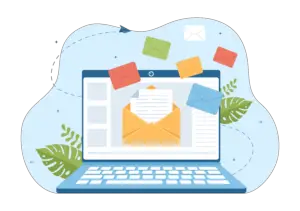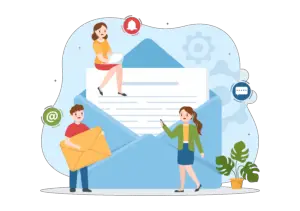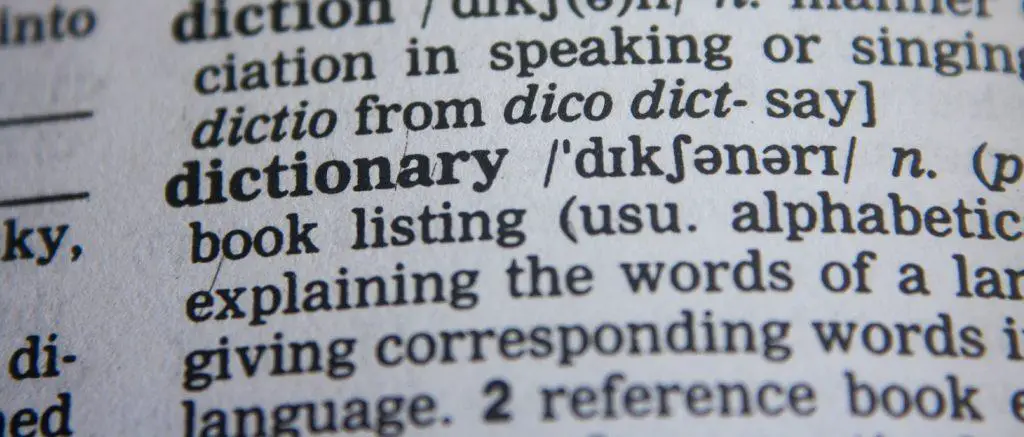Business Emails in English – Introduction
 In today’s fast-paced business world, emails have become an integral part of business communication. Whether you are corresponding with clients, colleagues or potential partners, the ability to write clear, concise and effective business emails in English is essential.
In today’s fast-paced business world, emails have become an integral part of business communication. Whether you are corresponding with clients, colleagues or potential partners, the ability to write clear, concise and effective business emails in English is essential.
Writing effective business emails in English can be challenging, especially when English is not your first language. Many people struggle with this skill, as the rules and conventions of English language can be challenging. However, with the right techniques and a little practice, anyone can master the art of writing professional and impactful business emails.
In this article, I will provide you with some practical tips and tricks for writing excellent business emails in English.
Know Your Audience
The first and most important step in writing effective business emails in English is to know your audience.
Consider who you are writing to – are they a client, a colleague, a manager or someone else? What is their level of familiarity with the subject matter? Understanding your audience will help you tailor your message and tone appropriately.
For example, a client may expect more formal language and structure, while an employee may be more receptive to a casual tone.
Address the Recipient Appropriately
Begin your email with a formal greeting such as “Dear Dr/Mr/Ms {Last Name}”.
If you are unsure of the recipient’s gender or last name, use a neutral greeting such as “Dear {First Name} {Last Name}” or simply “Hello”.
Start with a Clear Subject Line
Your subject line is the first thing your recipient will see, so it’s crucial to make it clear and concise. Use keywords that accurately describe the contents of the email and make it easy for your recipient to understand what your message is about.
This will help your reader quickly identify the purpose of your email and prioritise it accordingly.
Keep It Concise
Business professionals are busy people, so get straight to the point of your email. Start with a brief introduction and then move on to the purpose of your email.
Avoid using long, complex sentences or technical jargon that your reader may not understand.
Keep your emails short and to the point, as most people have limited time to read long emails.
Be clear and concise in your message and avoid using complex vocabulary that may confuse your reader.
Be Clear and Direct
When writing business emails in English, it’s important to keep your message simple and to the point.
Avoid using overly complex language or convoluted sentence structures, as this may confuse your reader.
Stick to the facts and make your message as clear as possible.
Use the Correct Tone
When writing business emails, it’s important to use the correct tone for the situation.
For example, if you’re addressing a sensitive issue or a customer complaint, use a calm and empathetic tone.
If you’re making a formal request or providing important information, use a more assertive tone.
Be Polite and Courteous
Business emails in English should always be professional and polite in tone. This includes using proper salutations, such as “Dear” or “Hello,” and thanking your reader for their time or consideration.
Using polite language and courteous tones in your business emails can help you build strong relationships with your colleagues and clients. Use “please” and “thank you” when appropriate.
Avoid using harsh or confrontational language, as this may create a negative impression of your communication skills. This may be interpreted as aggressive or rude.
Use appropriate language and avoid slang or informal expressions. Start with a polite greeting and end with a courteous closing.
Avoid Using Emojis or Slang
Using emojis or slang is not appropriate in business emails.
Stick to professional language and avoid using colloquialisms or slang that may be misinterpreted by your reader.
Use Proper Grammar and Punctuation
Using proper grammar and punctuation is essential in business emails in English.
At best, incorrect grammar and punctuation will create a negative impression of your communication skills and professionalism.
If you’re unlucky, poor grammar and punctuation can actually change the meaning of your sentence.
Use tools like Grammarly or Hemingway Editor to ensure your English emails are grammatically correct.
Use Professional Formatting
Using professional formatting can help make your email look more polished and professional.
This includes using a professional font, such as Times New Roman or Arial, and using standard formatting like bold or italics when necessary.
Use a professional email signature that includes your name, position and contact information.
Use Active Voice
Using active voice in your emails can help make them more engaging and easier to read.
This means using verbs in the active form, such as “I completed the report” instead of “The report was completed by me.”
Active voice is more direct and can help make your message more impactful.
Use Proper Formatting
Use proper formatting in your emails to make them easy to read. Avoid a wall of text.
Using bullet points or numbered lists can help break up lengthy emails and make them easier to read.
Use bold or italicised text to draw attention to important information.
This is especially useful when communicating complex information or instructions.
Include Relevant Information
When writing business emails in English, ensure that you include all relevant information that your reader needs.
This includes dates, times, locations and any attachments that may be required.
Be clear and concise in your message, and avoid leaving any important details out.
Use Appropriate Sign-Offs
Using appropriate sign-offs is essential in business emails. Avoid using casual language, such as “cheers” or “talk to you later.”
Instead, use professional sign-offs such as “yours sincerely”, “best regards” or “thank you”.
This will create a positive impression of your professionalism.
Proofread Your Email
Before hitting the send button, take the time to proofread and edit your email carefully, looking for errors and typos. Check for spelling and grammar errors (use tools like Spellcheck or Grammarly) to ensure your your email is clear, well-organized and easy to read.
This can help you avoid embarrassing mistakes and make a better impression on your readers because a well-written email that is free of errors and typos will make a positive impression on your reader.
Follow Up if Necessary
If you do not receive a response to your email within a reasonable amount of time, it is appropriate to follow up with a polite reminder email.
This shows your reader that you are serious about your communication and value their time.
Need More Information?
If you liked this article and want to find out more about writing business emails in English, please check out my Udemy course on this topic.
The course goes into a lot more detail about the topics listed here and also has plenty of examples that you can use as templates for your own business communication.
Please use this link to find out more about this useful and interesting course.
Business Emails in English – Conclusion
 Writing effective business emails in English is essential in today’s business world and it’s a skill that can be learned and mastered with practice.
Writing effective business emails in English is essential in today’s business world and it’s a skill that can be learned and mastered with practice.
By following the tips and tricks outlined in this article, you can improve your communication skills, make a positive impression on your readers and get the job done.
Remember to keep your audience in mind, use a clear and concise subject line, keep your message simple and to the point, be professional and polite, and proofread and edit your email carefully. With these best practices in mind, you’ll be able to communicate effectively and confidently with your colleagues, clients and partners through email.
So why not start practicing your business email writing skills in English today? With a little effort and dedication, you’ll be able to master this essential skill and take your professional communication to the next level. Happy emailing!
FAQs
Q: What is the best way to start a business email?
A: The best way to start a business email is with a polite greeting, such as “Dear [Name]” or “Hello [Name],” followed by a brief introduction or statement of purpose.
Q: What should I include in the subject line of a business email?
A: The subject line should accurately reflect the content of your email and be clear and concise. It should provide a brief summary of the purpose of the email.
Q: Is it okay to use emojis in business emails?
A: In general, it’s best to avoid using emojis in business emails, as they can be seen as unprofessional. Stick to professional language and avoid using slang or colloquialisms.
Q: Can I use abbreviations in business emails?
A: Abbreviations can be used in business emails if they are common and understood by the recipient. However, it is best to avoid using too many abbreviations or acronyms.
Q: How long should a business email be?
A: A business email should be as long as it needs to be to convey your message clearly and effectively. However, it’s generally best to keep your message concise and to the point, without including unnecessary details or information. Ideally, it should be no longer than one page.
Q: How should I sign off a business email?
A: The most common ways to sign off a business email are with “Best regards”, “Yours sincerely”, “Your faithfully” or “Thank you”. Choose a closing that is appropriate for the context of your message and the relationship you have with the recipient.
Q: Is it important to follow up on business emails?
A: Yes, it is important to follow up on business emails if you don’t receive a response within a reasonable amount of time. This shows your reader that you are serious about your communication and value their time.
Q: Where can I learn even more about writing professional business emails in English?
A: You should check out this Udemy course, titled “Business English – Write Professional Emails in English”.


